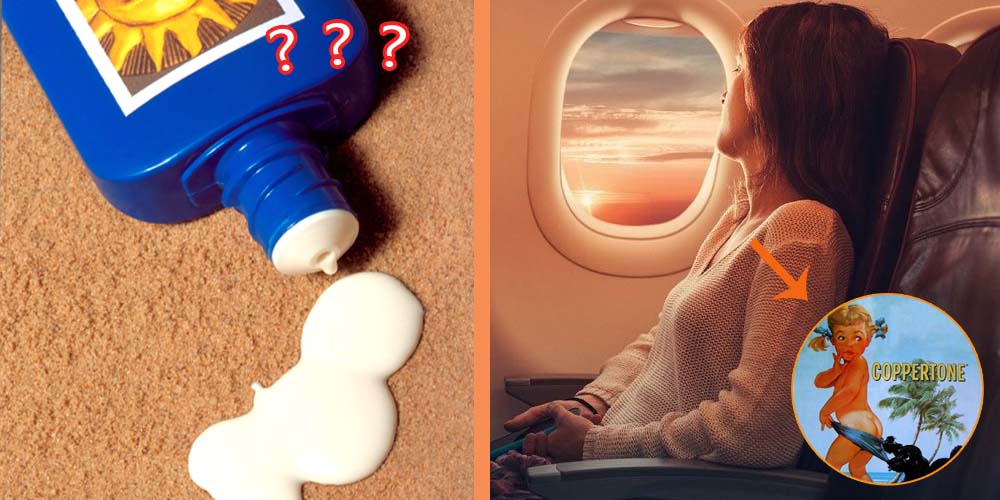
Flying in the sky gets you closer to the sun, and look what happened to Icarus.
There are a lot of dos and don’ts when it comes to taking care of yourself during a trip, but even the well-prepared traveler might be overlooking one major safety precaution: wearing sunscreen on airplanes.
Despite being inside, sitting on an airplane leaves you more exposed to the sun’s harmful rays than you may realize.

“Although plane windows can block UVB rays, UVA rays can still pass through and given the elevated level, the UV rays don’t have to travel as far to cause damage and can be much more intense at higher altitudes,” NYC-based dermatologist and assistant clinical professor of dermatology at Weill Cornell Medical College Dr. Marisa Garshick told Travel + Leisure.

The link between sunburns and flights was also evaluated in a study published in JAMA Dermatology in 2015, which measured the amount of UV radiation inside a plane’s cockpit against that of tanning beds. Researchers found that at an altitude of 30,000 feet, 56 minutes of exposure to harmful carcinogens is equivalent to what you’d get from lying in a tanning bed for 20 minutes.
Even though pilots and cabin crew are at a higher risk than the average traveler due to prolonged stints in the air, all passengers – especially those in window seats – should take the strength of the sun at higher altitudes seriously.

While flying, Dr. Garshick says, “It is important to protect from UVA rays in addition to UVB as UVA rays can lead to skin aging as well as skin cancer.”
She recommends “finding a sunscreen that is broad spectrum, which provides coverage for both UVA and UVB, and at least SPF 30. The sunscreen should be applied approximately 30 minutes before the flight and you should remember to reapply every two hours, especially if you are traveling on a long flight.”
As long as your sun-shielding products fit the TSA’s 3.4-ounce limit, both creams and sprays are allowed on planes in your carry-on bag.

For a fast-absorbing sunscreen, try Bioré UV Aqua Rich Watery Essence, $11 at amazon.com.
If you travel with makeup on, check the label to make sure it’s at least broad spectrum SPF 30 as well, and reapply every two hours the same way you would a regular sunscreen.
Dr. Garshick cautions, however, “Most makeups don’t fully meet the requirements, in which case it would be fine to use an additional sunscreen on top. There are some sunscreen powders, like Colorescience Sunforgettable Mineral SPF 50 Sunscreen, which can be easier to apply in these cases.”
If your skin gets dry on flights because of the drop in humidity, you can apply a moisturizer with SPF to restore your skin’s hydration while combating harmful radiation.
Don’t forget to reapply during your flight!
Credits: travelandleisure.com
